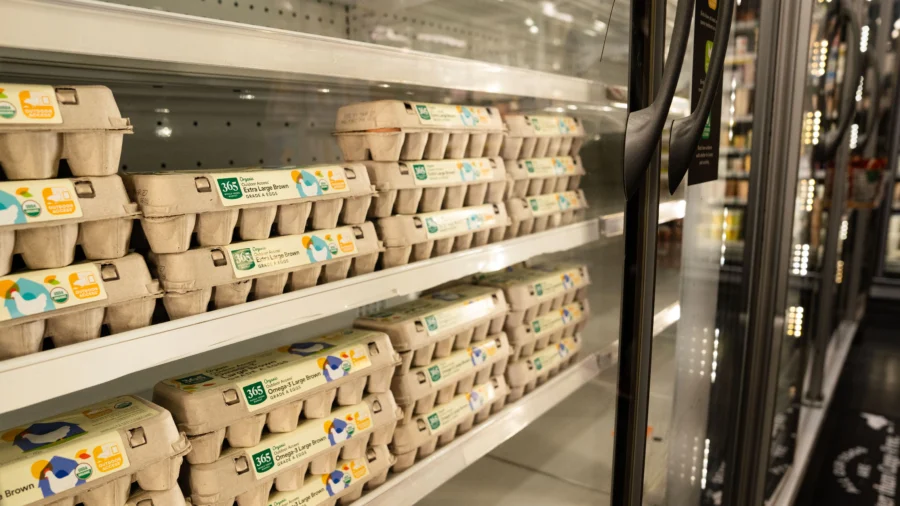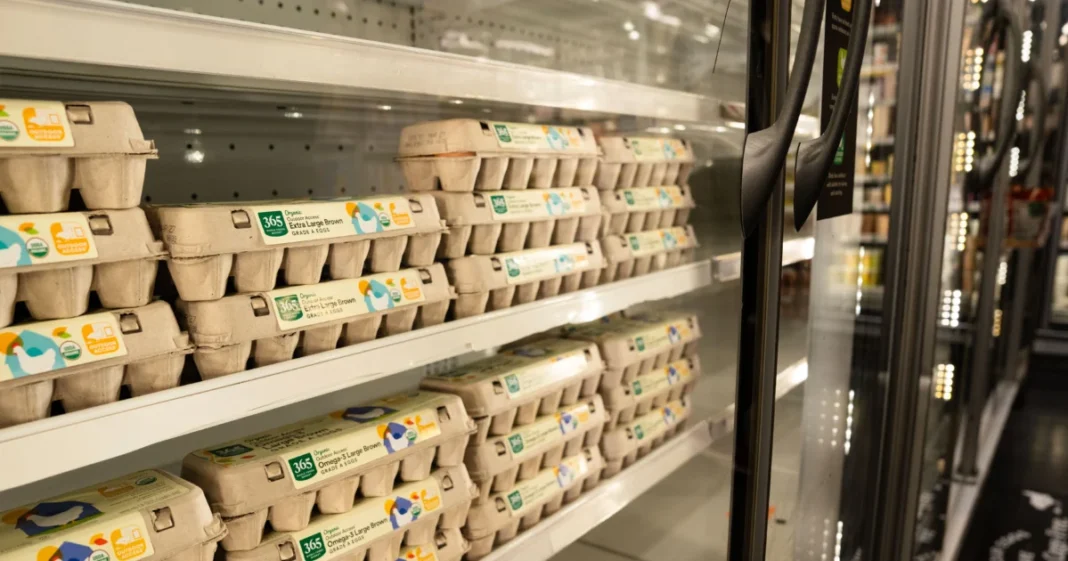
As egg prices continue to surge amid the ongoing bird flu outbreak, border enforcement agencies are reporting increased attempts to smuggle eggs into the United States.
On Friday, U.S. Customs and Border Protection (CBP) said that since January, agriculture specialists at the El Paso port of entry have encountered more than 90 people attempting to bring in eggs from Mexico.
“Travelers need to be aware that raw egg imports from Mexico are prohibited,” the CBP said in a statement, citing concerns about diseases such as bird flu—formally known as Highly Pathogenic Avian Influenza (HPAI)—and the Virulent Newcastle disease.
In addition to raw eggs, the import of raw chicken, unprocessed avian products, and live birds is strictly prohibited.
“Travelers are encouraged to declare all agriculture products to CBP officers and agriculture specialists, failure to declare may lead to potential fines and penalties,” the CBP said.
Texas is not alone in observing the recent rise of cross-border egg smuggling. In January, CBP’s San Diego office issued a similar warning, stating that travelers caught bringing raw eggs into California from Mexico without proper disclosure could face fines of up to $10,000.
In a notice issued Feb. 20, the USDA said it has banned live poultry or raw eggs from 17 parts of Canada where HPAI cases have been found in local birds. Fresh eggs and raw egg products from these regions may only enter the United States if they have been cooked or pasteurized.
Canadian regulators have likewise restricted the import of live birds, poultry, hatching eggs, unprocessed bird products, and certain fresh poultry items from more than half of all U.S. states. The restriction is set to expire mid-March, regardless of whether any of those states is still dealing with avian flu by then.
The border enforcement measures come as the avian flu outbreak continues to devastate poultry farms nationwide, which have been forced to cull tens of millions of egg-laying hens, driving egg prices to record highs.
As of Feb. 21, the average price for a dozen large white eggs stands at $8.07, up from $7.74 just a week earlier, according to the USDA’s latest Egg Markets Overview. Federal officials said that when grocers limit consumer purchases to conserve supplies, it heightens consumer awareness of the shortage and leads to more opportunistic buying, further depleting available stock.
Rebuilding flocks remains a challenge as the outbreak rages on, the USDA said. So far in 2025, at least 26.8 million egg-laying hens have been culled across nine states, with Ohio farmers suffering the heaviest losses.
While the USDA has yet to release official figures on total poultry losses in 2025, the American Farm Bureau Federation—the nation’s largest farmers’ organization—estimates that 43 million birds were lost in January and February alone. That accounts for 25 percent of all birds affected since the outbreak began in 2022.
From The Epoch Times


